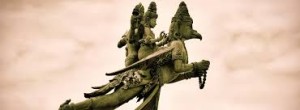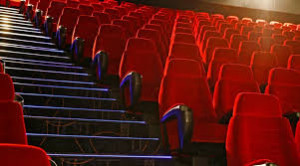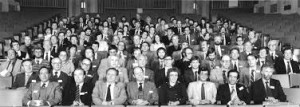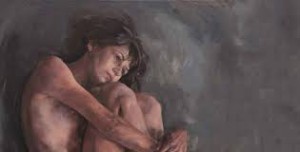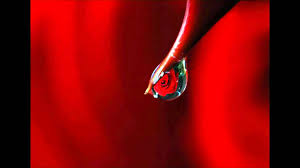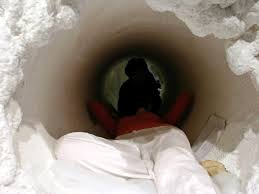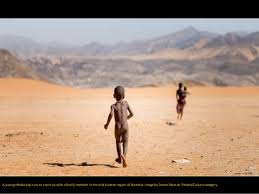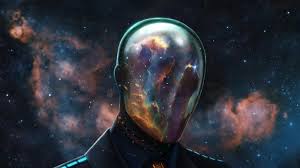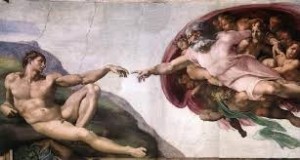We must first look into the medium in which events appear concrete and real. The great sweep of the events of nature can be understood only by looking into a portion of their reality that is not apparent to us. We want to examine, therefore, the inner power of natural occurrences.
A scientist examining nature studies its exterior, observing the outsideness of nature. Even investigative work involving atoms and molecules, or [theoretical] faster-than-light particles, concern the particle nature of reality. The scientist does not usually look for nature’s heart. He or she certainly does not pursue the study of its soul.
All being is manifestation of energy — an emotional manifestation of energy. Man or woman can interpret the weather in terms of air pressure and wind currents. He or she can look to fault lines in an effort to understand earthquakes. All of this works at a certain level, to a certain degree. Man’s or woman’s psyche, however, is emotionally not only a part of his or her physical environment, but intimately connected with all of nature’s manifestations. Using the terms Framed-mind 2, man’s or woman’s identification with nature is a strongly-felt reality in Framed-mind 2. And there we must look for the answers regarding man’s or woman’s relationship with nature. There in Frame-mind 2 the nature of the psyche appears quite clearly, so that its sweeps and rhythms can be understood. The manifestations of physical energy follow emotional rhythms that cannot be ascertained with gadgets or instruments, however fine.
Why is one killed and not another? Why does an earthquake disrupt an entire area? What is the relationship between the individual and such mass events of nature?
Before we can begin to consider such questions, we must take another look at our world, and ascertain its source, for surely its source and nature’s are the same. We make some distinctions between events and our interpretation of them.
It certainly seems that our world is concrete, factual, definite, and that its daily life rests upon known events and facts. We make a clear distinction between fact and fantasy. We take it for granted as a rule that our current knowledge as a people rests upon scientific data, at least, that are unassailable. Certainly technological development appears to have been built most securely upon a body of concrete ideas.
The world’s ideas, fantasies, or myths may seem far divorced from current experience — yet all that we know or experience has its origin in that creative dimension of existence that I am terming Framed-mind 2. In a manner of speaking our factual world rises on a bed of fantasy, myth, an imagination, from which all of our detailed paraphernalia emerge. What then is myth, and what do I mean by the term?
Myth is not a distortion of fact, but the womb through which fact must come. Myth involves an intrinsic understanding of the nature of reality, couched in imaginative terms, carrying power as strong as nature itself. Myth-making is a natural psychic characteristic, a psychic element that combines with other such elements to form a mythical representation of inner reality. That representation is then used as a model upon which our civilizations are organized, and also as a perceptual tool through whose lens we interpret the private events of our life in their historical context. For instance, while some might dismiss the story of primitive men and women separating from each other and living individually due to their emotional conflicts as a myth, they forget that this mere myth is something that might have laid the foundation for divorces in the modern world. Otherwise, there wouldn’t be professionals like a family lawyer bradford or institutions like courts or terms like “divorce” in the civilized world.
Remember that when we accept myths, we call them facts, or course, for they become so a part of our lives, of societies and our professions, that their basis seems self-apparent. Myths are vast psychic dramas, more truthful than facts. They provide an ever-enduring theater of reality. It must be clearly understood, then, that myths imply the nature of psychic events whose enduring reality exists in Framed-mind 2, and forms the patterns that are then interpreted in our world.
If someone is caught in a natural disaster, the following questions might be asked: “Am I being punished by God, and for what reason? Is the disaster the result of God’s vengeance?” A scientist might ask instead: “With better technology and information, could we somehow have predicted the disaster, and saved many lives?” He or she might try to dissociate himself or herself from emotion, and to see the disaster simply as the result of a non personal nature that did not know or care what lay in its path.
In all cases, however, such situations instantly bring to mind questions of man’s or woman’s reality and course, his or her connections with God, his or her planet, and the universe. He interprets those questions according to his or her own beliefs.
Myths are natural phenomena, rising from the psyche of man or woman as surely as giant mountain ranges emerge from the physical planet. Their deeper reality exists, whoever, in Framed-mind 2 as source material for the world that we know.
In those terms, the great religions of our civilizations rise from myths that change their characters through the centuries, even as mountain ranges rise and fall. We can see mountain ranges. It would be ridiculous to ignore their reality. We see our myths somewhat less directly, yet are apparent within all of our activities, and they form the inner structures of all or our civilizations with their multitudinous parts.
In those terms, then, Christianity and our other religions are myths, rising in response to an inner knowledge that is too vast to be clothed by facts alone. In those terms also, our science is also quite mythical in nature. This may be more difficult for some or us to perceive since it appears to work so well. Others will be willing enough to see science in its mythical characteristics, but will be most reluctant to see religion as we know it in the same light. To some extent or another, however, all of these ideas program our interpretation of events.
In this discussion, we are more or less dealing with the events of nature as we understand it. It will seem obvious to some, that a natural disaster is caused by God’s vengeance, or is at least a divine reminder to repent, while others will take it for granted that such a catastrophe is completely neutral in character, impersonal and [quite] divorced from man’s and woman’s own emotional reality. The Christian scientist is caught in between. Because we divorce ourselves from nature, we are not able to understand its manifestations. Often myths get in the way. When myths become standardized, and too literal, when we begin to tie them too tightly to the world of facts, then we misread them entirely. When myths become most factual they are already becoming less real. Their power becomes constrained.
Most people interpret the realities of their lives, their triumphs and failures, their health or illness, their fortune or misfortune, then, in the light of a mythical reality that is not understood as such. What is behind these myths, and what is their source of power?
Facts are a very handy but weak brew of reality. They immediately consign certain kinds of experiences as real and others as not. The psyche, however, will not be so limited. It exists in a medium of reality, a realm of being in which all possibilities exist. It creates myths the way the ocean creates spray. Myths are originally psychic fabrications of such power and strength that whole civilizations can rise from their source. They involve symbols and know emotional validities that are then connected to the physical world, so that that world is never the same again. They cast their light over historical events because they are responsible for those events. They mix and merge the inner, unseen but felt, eternal psychic experience of man with the temporal events of his or her physical days, and form a combination that structures thoughts and beliefs from civilization to civilization. In Framed-mind 2 the interior power of nature is ever-changing. The dreams, hopes, aspirations and fears of man and woman interact in a constant motion that then forms the events of our world. That interaction includes not only man, of course, but the emotional reality of all earthly consciousnesses as well, from a microbe to a scholar, from a frog to a star. We interpret the phenomena of our world according to the mythic characteristics that we have accepted. We organize physical reality, then, through ideas validity. The physical body itself is quite capable of putting the world together in different fashions than the one that is familiar to us.
We divorce ourselves from nature and nature’s intents far more than the animals do. Nature in its stormy manifestations seems like an adversary. We must either look for reasons outside of ourselves to explain what seems to be nature’s ill intent at such times, or its utter lack of concern.
Science often says that nature care little for the individual, only for the species, so then we must often see ourselves as victims in a larger struggle for survival, in which our own intents do not carry even the puniest sway.









